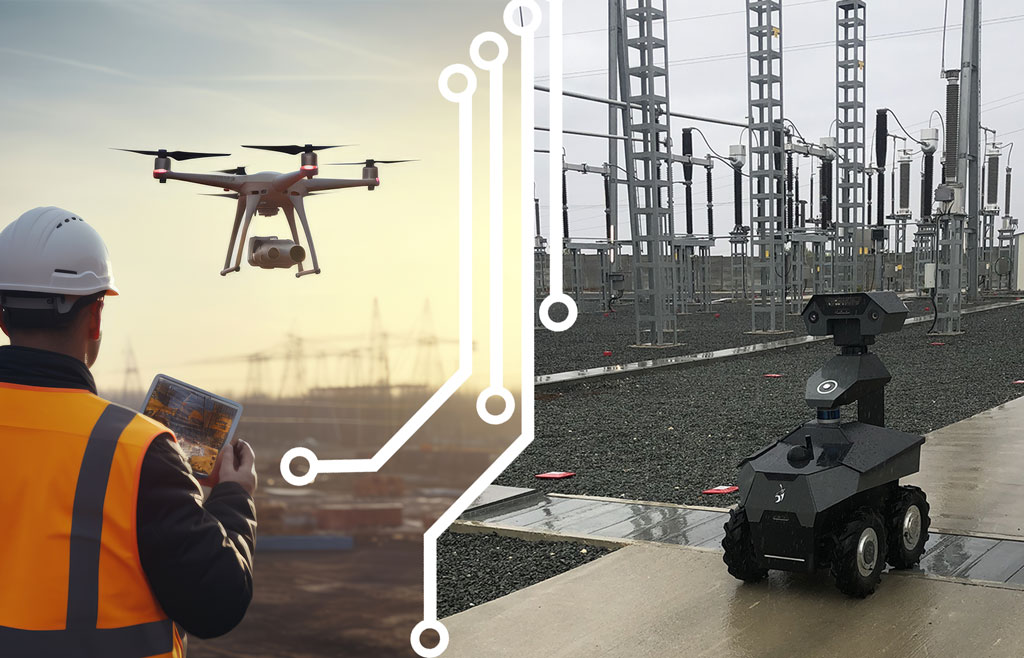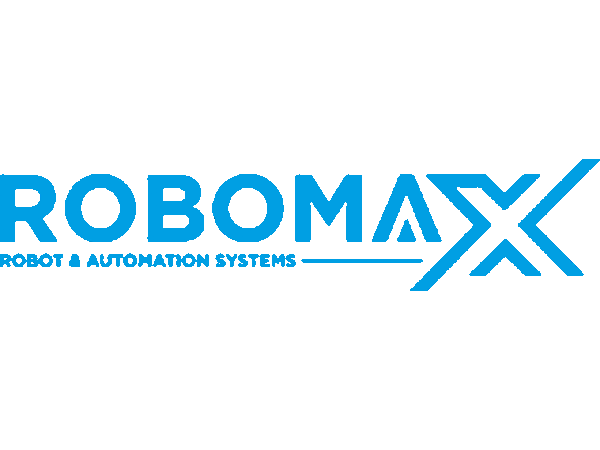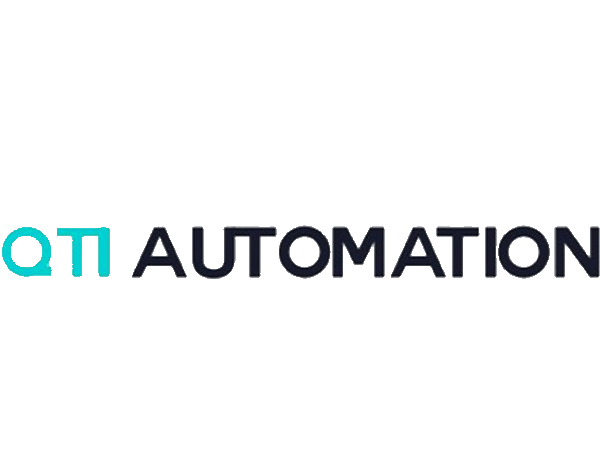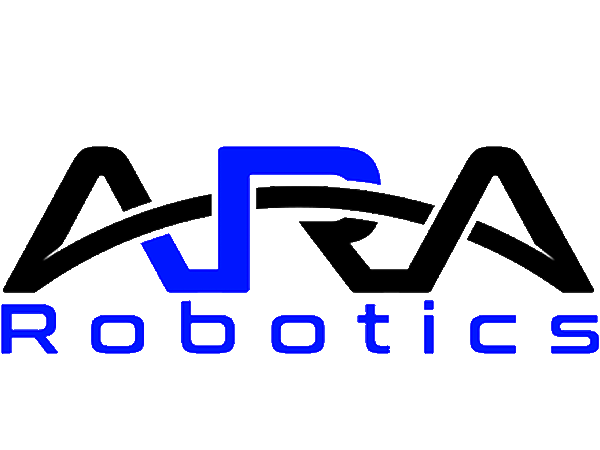
Integrating innovative technologies is becoming increasingly important in the field of private safety and security. In fact, those responsible for inspection and surveillance are turning to two promising solutions to ensure optimum protection of sensitive sites: autonomous security robots and flying surveillance drones.
But how do you choose between these two solutions? Are they complementary or opposed?
In this article, we take a look at the advantages, disadvantages and synergies of these new technologies, which are revolutionising the protection of secure sites.
1.Surveillance drones: guardians of the skies
Flying drones, with their agility and ability to cover vast areas quickly, have rapidly gained popularity in modern security. Their usefulness lies in their ability to fly over hard-to-reach areas, providing a real-time overview. Equipped with high-definition cameras and sophisticated sensors, these drones can patrol over areas inaccessible to ground-based robots, offering an interesting aerial perspective. Taking the energy sector as an example, drones can patrol over vast fields of solar panels or wind turbines, providing an instant overview of the installations and enabling rapid repair in the event of a malfunction.
Advantages of flying drones :
- Fast deployment : their rapid response to incidents helps to minimise reaction times.
- Overview and rapid response: flying drones enable real-time surveillance, providing an immediate overview of sites.
- Flexibility of movement: with the ability to fly at different altitudes and bypass obstacles, drones can access hard-to-reach areas, ensuring complete site coverage.
- Technology: drones often incorporate advanced technologies such as night vision and thermal sensors, enhancing their ability to detect potential threats.
The disadvantages of security drones :
- High dependence on weather conditions: drones are sensitive to weather conditions. This limits their use. In fact, it’s impossible to fly a drone in strong winds, heavy rain or thunderstorms…
- Limited battery capacity: rounds are generally limited to a maximum of 20 minutes. This is because their battery capacity requires frequent recharging, which can compromise the continuity of surveillance.
- Vulnerability to electronic interference : drones may be subject to interference compromising their operation and safety.
- Telepilot aptitude certificate: Whether the drone is remotely operated or autonomous, users must be able to pilot it remotely. Although some manufacturers offer autonomous surveillance drones, obtaining a remote pilot aptitude certificate is often compulsory. This is both a logistical and a budgetary constraint. It should also be noted that an operator must control the drone while it is in flight.
- Strict and declared flight authorisation: to fly a drone legally, it is compulsory to obtain a flight authorisation in which the flight area and times are declared.
- Tough logistical set-up: in accordance with DGAC rules, a marked and screened area (15m²) must be dedicated to the drone’s landing and take-off. As this area is off-limits, it requires cameras, as well as active surveillance of the area when the drone is in operation.
- High initial cost: Acquiring and maintaining security drones can represent a significant financial investment, although this can be offset by reduced costs in the long term.
2. Autonomous security robots: ground guards
Autonomous security robots, such as the GR100, designed to patrol and monitor at ground level, are an effective complement to the work of drones. Equipped with sophisticated sensors, these robots provide a continuous physical presence over a wide perimeter and automate pre-defined actions.
Let’s take a chemical production site as an example. A robot such as the GR100 patrols the entire site to detect any suspicious activity and reports it immediately to the security operators. At the same time, it inspects the installations to detect potential leaks, measure gas emissions and provide data in real time, enabling rapid intervention in the event of an incident.
The advantages of security robots :
- Physical presence as a dissuasive force: the presence of a robot on land acts as a dissuasive force, discouraging intruders with its imposing presence.
- Precise navigation: autonomous security robots, such as the GR100, navigate precisely in complex environments, adapting to changing terrain and providing in-depth coverage of designated areas.
- Autonomous robot: the special feature of the GR100 is that it is completely autonomous. Both to carry out its missions and to recharge on its dock. No human intervention is required. Note, however, that this is not the case for all so-called “autonomous” surveillance robots.
- Long battery life: Compared with drones, ground robots often benefit from longer battery life, enabling extended patrols without interruption.
- 24/7 surveillance and inspection: Day or night, whatever the weather, the outdoor security robot remains operational.
- Cutting-edge technology: surveillance robots like the GR100 are equipped with multiple sensors, thermal cameras, HD cameras and image analysis algorithms that can detect anomalies and provide meticulous, systematic coverage of facilities.
However, autonomous security robots have their own challenges:
- Limitations in difficult areas: in remote areas such as construction sites, ground robots can struggle to navigate rough terrain, limiting their usefulness in certain environments.
- Limited travelling speed : For obvious safety reasons, the travelling speed of outdoor autonomous robots is lower than that of drones. For example, our GR100 robot moves at the speed of a man, i.e. 5.5 km/h.
- Low-traffic area: Autonomous surveillance robots are not designed to move among people, since one of their missions is to detect people.
- High initial cost: The acquisition and maintenance of autonomous safety robots can represent a significant initial financial investment for companies, although this is offset by reduced costs in the long term.
Aware of this, at Running Brains Robotics we have chosen to rent our robots. Our all-inclusive* offer means that our customers can quickly measure a positive return on their investment.
3. Ground robot and security drone, the winning duo
Rather than seeing drones and ground-based robots as competing solutions, players in the security and private safety sectors should exploit their complementary nature. The simultaneous use of flying drones and autonomous security robots enables a global approach to outdoor surveillance. Let’s take a chemical production site as an example. A robot such as the GR100 patrols the entire site to detect any suspicious activity and reports it immediately to the security operators. At the same time, it inspects the installations to detect potential leaks, measure gas emissions and provide data in real time, enabling rapid intervention in the event of an incident.
- Coordination of patrols: the ground robots patrol autonomously 24 hours a day, while the drones can carry out regular aerial patrols. This means that the areas monitored can be very extensive.
- Real-time communication: real-time alerts from the drones and robots enable teams to work together effectively, improving responsiveness to potential threats.
- Centralised data analysis: the data collected by the drones and robots can be centralised and analysed, providing reliable, regular and usable information for proactive security.
4. Logistical and financial considerations before integrating robot and/or drone
Before adopting a security drone and/or an autonomous outdoor robot, professionals in the private security sector need to consider the financial, logistical and human aspects.
From a logistical point of view, integrating these technologies requires careful planning to ensure smooth implementation. Companies need to assess staff training requirements, adapt existing infrastructures and put in place effective communication protocols between drones, robots, and the control centre. A drone will require more logistical set-up than a robot like the GR100, for example.
In financial terms, although the initial investment may seem substantial, it is essential to consider the long-term benefits. Operational costs can be reduced thanks to proactive monitoring, rapid intervention in the event of an incident, and a reduction in potential losses. It is also crucial to take into account the savings made by preventing material damage and operational disruption.
It’s vital not to overlook the costs involved in maintaining drones and ground robots, as well as the regular updates required to stay at the cutting edge of safety. At Running Brains Robotics, for example, our RaaS offer includes software upgrades, maintenance and spare parts.
On the human side, internal communication is essential to ensure the integration and acceptance of these technologies by the teams in the field. As far as the robot is concerned, it will help to improve working conditions for operatives by reducing drudgery and risks. These 2 technologies will also help to enhance the role of safety officers by relieving them of time-consuming tasks.
Ultimately, the transition to this new era of private security requires a thorough analysis of costs, benefits and constraints, combined with a long-term strategic vision. Professionals who manage to balance these logistical and financial considerations will be better positioned to take full advantage of the potential offered by surveillance drones and autonomous vigil robots.
By investing wisely in this technological convergence, they can not only enhance their security, but also position their company at the forefront of innovation in the field of private safety and security.
CTO Robotics
CTO Robotics is a global media and consulting company dedicated to robotics, automation, artificial intelligence, and emerging technologies. We create high-impact content that reaches engineers, decision-makers, and innovators worldwide. Through articles, videos, social media campaigns, and community-driven storytelling, we help companies showcase their technologies, strengthen their brand, and connect with the right audience. Much like Interesting Engineering or Wevolver, our mission is to bridge the gap between technology providers and industry professionals — turning innovation into visibility, and visibility into growth. 👉 Whether you are launching a new product, building your brand, or looking for global recognition, CTO Robotics is your media partner for exposure, credibility, and business opportunities.
All stories by: CTO RoboticsRelated Posts
-
August 6, 2025
The Next Step in Safe, Autonomous Robotic Inspection














0 Comments